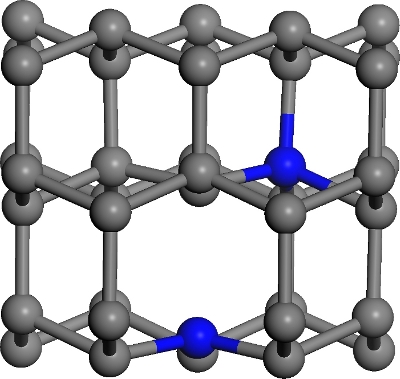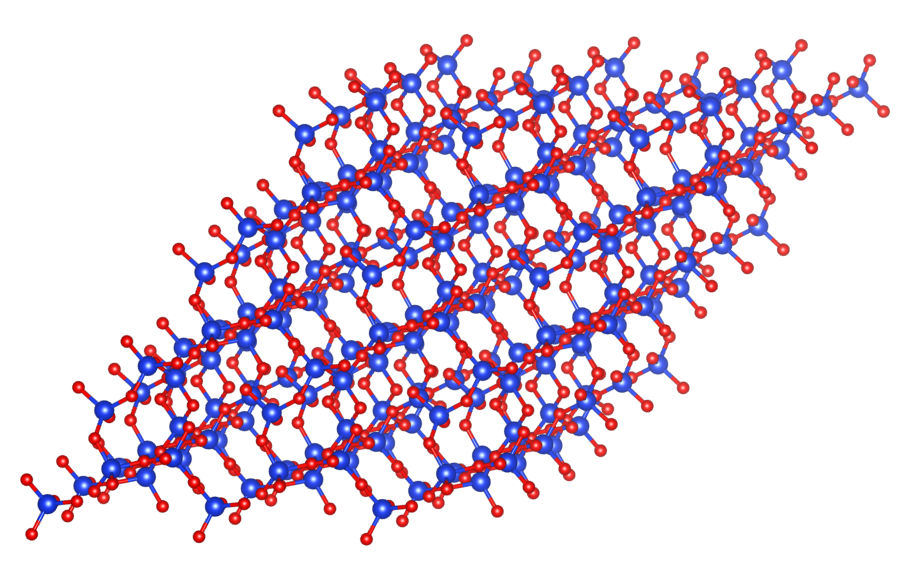

|
ANDREW MORRIS
The group is recruiting for graduate students this year (January 2015, Autumn 2015). Please see below for three suggested projects.
Funding
It is possible to obtain Ph.D. funding though the Centre for Doctoral Training in Computational Methods for Materials Science, Winton Scholarships and departmental EPRSC studentships. Please see the University website for further funding strategies.
Indicate your preference of supervisor on the GRADSAF form.
PhD and MPhil Projects
Ab initio battery materials discovery
 In this project we will use cutting-edge computational structure prediction techniques to investigate new electrode materials in lithium and sodium ion batteries (LIB/NIB).
In this project we will use cutting-edge computational structure prediction techniques to investigate new electrode materials in lithium and sodium ion batteries (LIB/NIB).
The theoretical prediction of even very simple structures has, until recently, been out of bounds due to the large number of possible atomic arrangements. The ab initio random structure searching method (AIRSS) [1] uses a stochastic approach to suggest different structural configurations of atoms within a material. By searching over a range of stoichiometries it is possible to model how a battery is charged as we can predict the structural changes of the electrodes as a charging potential is applied. Using this knowledge it is possible to perform further theoretical analysis such as NMR and EELS (electron energy loss) spectroscopies and predict charge and discharge voltages.
AIRSS has been very successful at predicting the structures of lithium silicides, germanides and sulphides[3] along with lithium defects in silicon[2]. Our latest projects involve going beyond these and considering the dynamical processes as the batteries charge and discharge in the anode and cathode using both AIRSS and data-mining techniques.
This project is computational and suitable for both the theorist interested in technologically relevant applications and the experimentalist looking for insight into computational structure prediction.
[1] C.J. Pickard, and R.J. Needs , Phys. Rev. Lett. 97, 045504 (2006)
[2] K. Ogata, E. Salager, C. J. Kerr, A. E. Fraser, C. Ducati, A. J. Morris, S. Hofmann and C. P. Grey, Nature Comm. 5, 3217, (2014)
[3] Kimberly A. See, Michal Leskes, John M. Griffin, Sylvia Britto, Peter D. Matthews, Alexandra Emly, Anton Van der Ven, Dominic S. Wright, Andrew J. Morris, Clare P. Grey and Ram Seshadri, J. Am. Chem. Soc ASAP (2014)
Defects in simple oxides and semiconductors
 In this project we investigate the atomic vacancies of a range of simple oxides using cutting-edge computational structure prediction and first-principles density-functional theory (DFT).
In this project we investigate the atomic vacancies of a range of simple oxides using cutting-edge computational structure prediction and first-principles density-functional theory (DFT).
The oxides are a class of materials which have thousands of technologically relevant uses: from gate dielectrics in field-effect transistors (FETs), solid-oxide fuel cells and superconductors for low-loss power transmission. Furthermore, some oxides also piezo- or ferroelectric making them useful for microelectromechanical systems (MEMS).
The ab initio random structure searching method has found new low-energy self-interstitial/hydrogen and H/N/O complexes in silicon along with charged oxygen interstitials and He ions in the complex oxide, zirconolite, (CaZrTi2O7) which is used for nuclear waste encapsulation.
There is evidence that in even the simplest of oxides, such as, Na2O, MgO, Al2O3, SiO2, P2O5, new types of vacancies can still be uncovered, suggesting that novel applications could be realised from well-known materials.
Modelling disorder
 Many important technologically relevant materials cannot be modelled as a periodic crystal structure. The models must also encompass the short- and longe-range disorder in these materials in order to accurately predict their properties. For example, point defects can drastically change both the electronic properties of semiconductors and the physical properties of high-performance alloys. Beyond point defects, both site disorder and amorphicity play a role in lithium ion battery electrodes.
Many important technologically relevant materials cannot be modelled as a periodic crystal structure. The models must also encompass the short- and longe-range disorder in these materials in order to accurately predict their properties. For example, point defects can drastically change both the electronic properties of semiconductors and the physical properties of high-performance alloys. Beyond point defects, both site disorder and amorphicity play a role in lithium ion battery electrodes.
The crystal structures of new materials can be discovered using ab initio structure prediction techniques, such as AIRSS. Over the past several years the group has developed methods for the structure prediction of point defects in semiconductors, battery anodes and ceramics for nuclear waste encapsulation. In this project we will develop new techniques to deal with more disordered systems using high-throughput computation on ensembles of structures, giving us insight into such materials at finite temperature and paving the way to an understanding of ion transport. First principles spectroscopies such as EELS and NMR will be used to compare our predictions with experiment.
Mini and midi NanoDTC projects
These are also available. It is possible to have them consist of an experimental element too.
Part III Projects
- Novel Battery Materials using Ab Initio Random Structure Searching
- Zintl-Helices using Ab Initio Random Structure Searching
- Using high-pressure phases of lithium silicides as a pathway to perfectly flat silicene
Part II Literature Reviews
- Linear-Scaling Density-Functional Theory
- Global Search Techniques for the Structure Prediction of Materials
- Time Dependent Density Functional theory past and future
- Many-body perturbation theory and the GW approximation